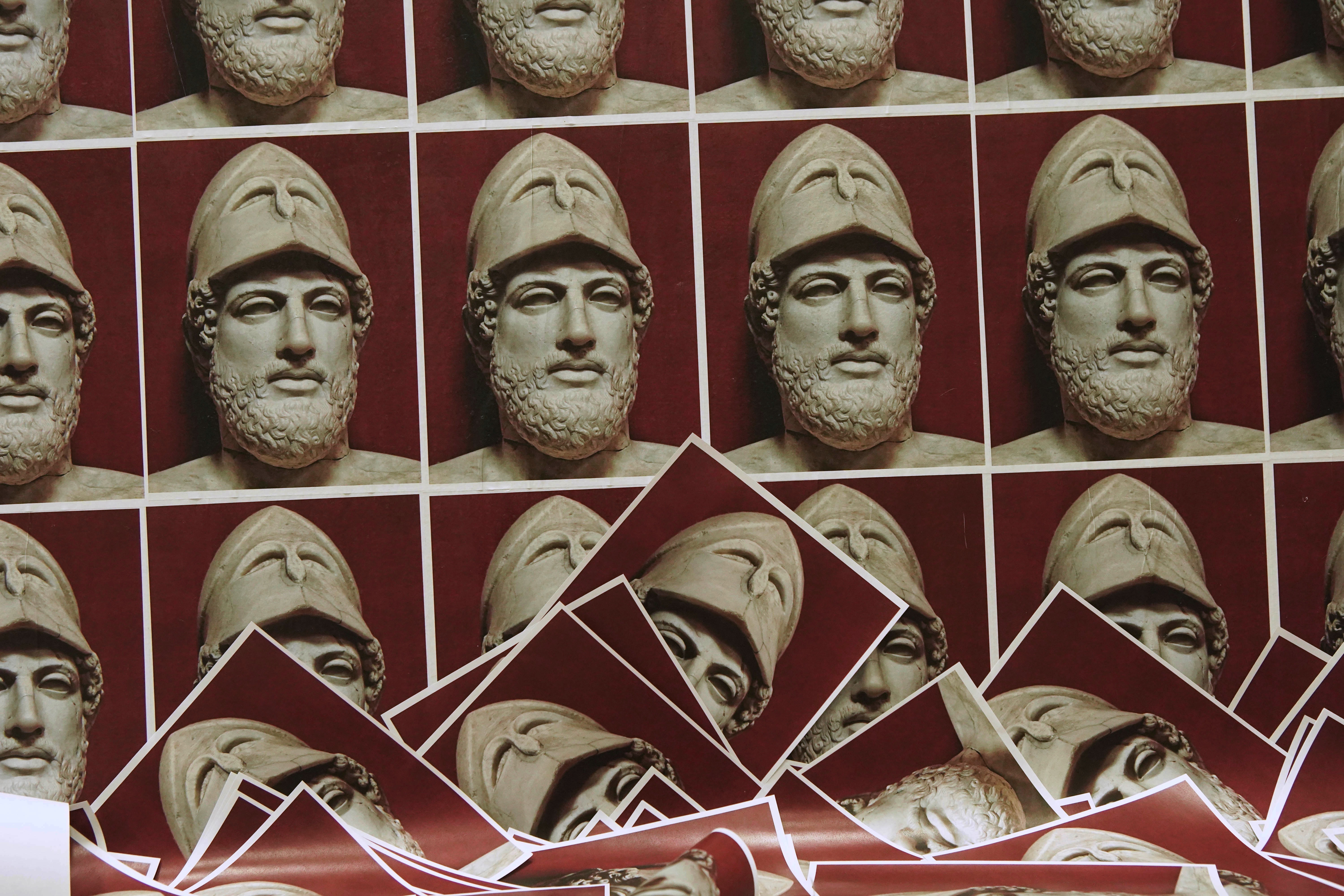How does it feel to be a fiction? Athens Virus (October 26-December 9, 2018)
“Viral” text and digital performance via personality test; sculptural installation (5 18”x18” canvases, camera, facial tracking software, QR code, 2 40” flat screen monitors)
The fourth iteration, How does it feel to be a fiction? Athens Virus, was commissioned by the 6th Athens Biennale and explores the relationship between digital dissemination and democracy. Participants are invited to first take a personality test, which was used by the consulting firm Cambridge Analytica to gather the data of approximately 87 million Facebook users. When they are given their personality score, the viewer is then invited to participate in the digital performance by visiting the site www.howdoesitfeeltobeafiction.org. On this site, they told that if they consent to an email being sent in their name (name@afiction.org) to all of the contacts stored in their Gmail account, they will gain access to an essay.
The sent email contains an invitation to take the personality test and participate in the performance, allowing new viewers to opt-in to the performance. The essay explores the relationship between personality testing, data mining, and the impact of both on contemporary democratic races. There are five versions of the essay, which corresponds to the five personality types scored on the personality test. The participant receives and disseminates the version of the essay that corresponds to their personality. In this manner, the work reproduces itself by circulating “virally" through tens of thousands of personal email accounts.
In addition to the online mechanism, this work involves a gallery installation, which uses facial recognition software to track how a viewer looks at the 5 blank canvases arranged in the space. Their facial expressions are correlated to a personality type, which is added to the online test numbers. The monitor on the right side of the gallery displays these numbers in real time, and when the piece ends, the final number for each of the personality types (as they have been tabulated through the online test and performed facially in the gallery space) will set the price for each of the five blank canvases. The monitor on the left side of the gallery keeps track of the global geographic locations of everyone who has participated in the piece. Viewers can also opt-in to the online component of the piece via QR codes, one of which is on the gallery wall, the rest of which are placed throughout the biennale buildings. This physical installation corresponds to an idea explored in the essay, which is that both digital culture and art practice function through an economy of attention.



